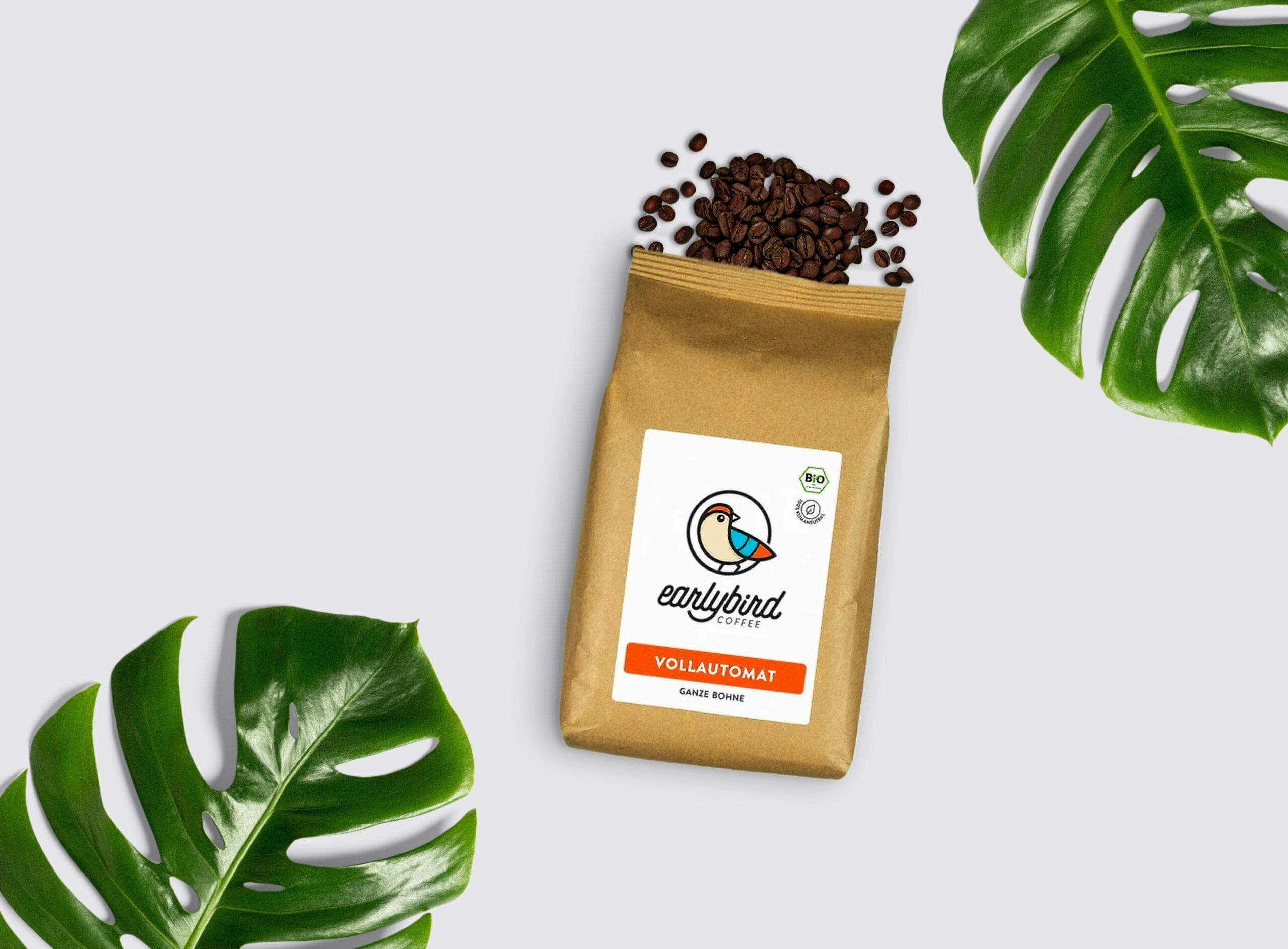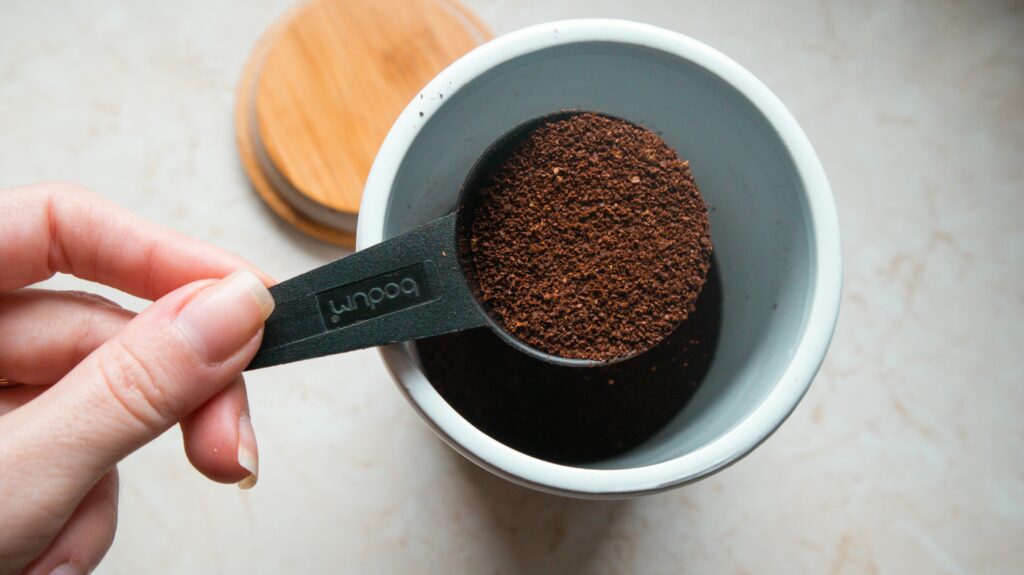In a world where technology is advancing at a breakneck pace, the boundary between science fiction and reality seems to blur a little more each day. Elon Musk’s latest project, the Tesla Optimus robot, represents a significant leap in our journey towards a future of personal robotics. But as headlines and promotional materials talk about the robot’s capabilities, the question arises: can Tesla Optimus Robot Make Coffee for you? In this article, I will explore the capabilitie
Table of Contents
ToggleWhat Is Tesla Optimus?
Definition
“Can Tesla Optimus Make Coffee for You?” refers to the question of whether Tesla’s humanoid robot, Optimus, is capable of autonomously performing the task of making coffee, including all the steps involved, such as measuring ingredients, boiling water, and serving. It explores the robot’s abilities, limitations, and potential as a personal kitchen assistant.
The Tesla Optimus robot, unveiled in 2022, is a humanoid robot designed to carry out a range of everyday tasks. With a sleek design, human-like features, and an emphasis on flexibility, Optimus aims to revolutionize how we approach automation in our daily lives. Unlike Tesla’s cars, which are designed for high-speed transport and luxurious experiences, Optimus is created with practicality in mind—an extra pair of “hands” for your everyday tasks.
Powered by Tesla’s AI technology, the Optimus robot is expected to perform tasks that are both repetitive and laborious. The robot stands approximately 5 feet 8 inches tall, weighs around 125 pounds, and features human-like dexterity, a direct nod to its intent: performing tasks that require a level of sensitivity and movement not typically seen in most robots. This brings us to the all-important question: is making a cup of coffee within its repertoire?
Key Points for “Can Tesla Optimus Make Coffee for You”:
- Tesla Optimus is a humanoid robot designed for household tasks.
- Making coffee involves complex steps: measuring, boiling, and pouring.
- Tesla Optimus uses advanced AI and robotics to handle these actions.
- The robot’s dexterity is crucial for handling hot liquids and small items.
- Currently, it can assist but needs programming for each task.
- Integration with smart appliances could make coffee-making easier.
- Future advancements aim for more autonomous, adaptable capabilities.
- Elon Musk envisions Optimus as a daily household assistant.
- Coffee-making highlights Tesla Optimus’ broader potential in homes.
- Practical use may involve shared tasks between the human and robot.
The Challenge of Making Coffee

Why Is Making Coffee So Complicated for Robots?
Making a cup of coffee might seem like a simple task to most of us. It’s something we do almost automatically—measuring water, scooping coffee grounds, pressing a button, or perhaps using a French press to extract that rich flavor. However, for a robot, this task is complex, involving a series of actions that require precision, coordination, and adaptability. Let’s break down why making coffee is not a straightforward task for any robot, including the Tesla Optimus Robot Make Coffee-making robot.
First, consider the manual process: it requires understanding the types of equipment available—from traditional coffee makers to espresso machines or French presses. Then comes the precision needed in handling ingredients. The robot would need to measure the correct amount of coffee, understand water temperature, operate a coffee machine or kettle, and sometimes even froth milk, all while navigating a kitchen environment with varying layouts.
This makes the task far more intricate than it initially appears. For a robot like Tesla Optimus to master this, it requires advanced sensory input, spatial awareness, and the ability to adapt to changing situations—capabilities that have not fully matured in commercial robots until recently.
Stats: Coffee-Making Steps Broken Down
| Step | Description |
|---|---|
| Measure Water | Requires precision and volume detection. |
| Scoop Coffee | Handling loose grounds accurately. |
| Boil Water | Requires temperature control. |
| Brew Coffee | Multiple techniques depending on method. |
| Pour and Serve | Dexterity to avoid spills. |
How Advanced Is Tesla Optimus?
Technological Backbone of Optimus
The Tesla Optimus kitchen assistant robot is built on Tesla’s AI infrastructure, borrowing some of the technologies used in the company’s self-driving vehicles, such as advanced vision systems and machine learning algorithms. This allows the robot to perceive its environment in three dimensions, recognize objects, and understand basic commands. These capabilities are essential for Optimus to perform household chores, including potential coffee-making functions.
For a task like making coffee, Optimus would need to go through several steps: identifying the ingredients (coffee, water, etc.), picking them up, and utilizing appliances like kettles, grinders, or coffee makers. Tesla has made significant strides in robotics with their Full Self-Driving (FSD) system, which helps vehicles navigate complex real-world scenarios. Similar principles apply here—Optimus needs to safely navigate its environment, avoid obstacles, recognize household objects, and understand their intended uses.
Manual Dexterity and Coffee Preparation

The Human Analogy: How Would I Make Coffee?
One of the key components of making coffee is manual dexterity—the ability to grip, manipulate, and interact with different objects. Tesla has invested in developing hands for the Optimus robot that closely mimic human dexterity. Its fingers are designed to provide enough strength to carry heavy objects while also maintaining the sensitivity to manipulate delicate items. This is a promising sign, as making coffee involves tasks like opening containers, handling coffee grounds, and pouring hot liquids.
Potential for Mistakes: Spilling the Beans
The current model of Optimus reportedly includes articulated fingers, force sensors, and haptic feedback, which could, in theory, allow it to interact with a wide range of objects. For instance, the robot could grip a kettle, pour water into a coffee machine, or even operate a grinder to grind fresh beans. However, the reliability and precision of such movements are still in their early stages. A human can easily adjust if something goes wrong—like if the coffee grounds spill—but for a robot, this requires recalibration, precise programming, and sometimes external intervention.
Programming Versus Learning
Can Optimus Learn New Tasks Like a Human?
One of the biggest limitations in household robots today is the need for extensive programming to perform new tasks. When it comes to Optimus, the robot currently requires instructions for performing complex operations, and making coffee is one such operation that involves several unpredictable elements.
The concept of ‘learning by demonstration’ is key to advancing Optimus’ capabilities. For example, showing Optimus how to make coffee once and having it replicate that exact sequence across different kitchen environments would be an ideal scenario. However, Tesla’s robot currently relies on predefined tasks, meaning it needs to be taught in a controlled manner, with specific variables defined. Kitchens differ significantly from one home to another, and unless Optimus has prior knowledge of each unique setup, making coffee could become a challenge.
Adaptation Issues: Kitchens Are Unique
A key differentiator for advanced robots like Tesla Optimus is whether they can adapt to slight changes in their environment. This could mean identifying a different coffee machine model or figuring out where someone stores their mugs. Tesla is striving towards making Optimus capable of such autonomous learning, but as of now, this level of adaptability has not been fully realized.
Potential Capabilities of Optimus

Could Optimus Make Coffee in a Controlled Setting?
Even though Tesla Optimus Robot Make Coffee in every household environment, it is certainly capable of doing so under specific conditions. If the environment is highly structured and Optimus is given a pre-programmed set of instructions, then yes, the robot can make coffee. This means that in a highly controlled scenario, like an environment where all tools and ingredients are always placed in the exact same location, Optimus could perform well.
Helper Role: Assisting Rather Than Taking Over
Additionally, Tesla Optimus could serve as a helper rather than taking full charge of the process. For example, it could retrieve ingredients, grind the coffee, or even help in cleaning up after the coffee-making process. The ultimate aim of Optimus is to assist with daily tasks, and making coffee, while complex, can be achieved in incremental steps with the robot acting as a capable assistant.
Integration with Smart Appliances
Could Optimus Make Coffee in a Controlled Setting?
Even though Tesla Optimus Robot Make Coffee in every household environment, it is certainly capable of doing so under specific conditions. If the environment is highly structured and Optimus is given a pre-programmed set of instructions, then yes, the robot can make coffee. This means that in a highly controlled scenario, like an environment where all tools and ingredients are always placed in the exact same location, Optimus could perform well.
The Future of Smart Homes and Robotics
One way that Tesla could potentially enhance Optimus’ capability to make coffee is through integration with smart appliances. In an era where coffee machines are increasingly becoming “smart,” allowing connectivity through Wi-Fi and Bluetooth, Optimus could communicate directly with these appliances. This would remove the need for highly precise manual manipulation.
Imagine a scenario where you tell Tesla Optimus to make coffee, and the robot coordinates with your smart coffee machine to prepare it. Instead of manually measuring ingredients or pressing buttons, Optimus could serve as an intermediary, reducing the complexity of the task. While this approach may seem less impressive from a manual dexterity perspective, it certainly highlights a potential avenue for creating a more efficient coffee-making assistant.
Human-Robot Interaction: Making Coffee Together

Working Alongside Optimus in the Kitchen
A major aspect of having a robot in the house is not necessarily to replace every mundane task but to help assist with those tasks, freeing up your time for more meaningful activities. The idea of “human-robot collaboration” comes into play here. With Optimus as an assistant, you could be the one adding your preferred amount of coffee while Optimus handles the pouring of hot water, positioning cups, or even keeping track of the time for optimal brewing.
Shared Responsibilities: Splitting Coffee Tasks
Such collaboration helps mitigate the limitations that Tesla Optimus currently has. It reduces the need for perfect precision in all tasks while still easing some of the workload for the human involved. This scenario is particularly practical for complex or delicate operations, like frothing milk to the right consistency or ensuring the perfect brew time for French press coffee.
Realistic Expectations for the Near Future
Where Is Optimus Today?
The prospect of a humanoid robot making coffee is thrilling and taps into our imagination of futuristic living. However, the reality, as of now, is that Tesla Optimus is still very much in its developmental phase. Currently, Tesla is focusing on providing Optimus with core functions like walking, navigating different environments, and interacting with common objects—all foundational capabilities for more complex tasks like coffee-making.
For Optimus to reliably make coffee independently, several things need to improve: sensor accuracy, machine learning capabilities, dexterity, and, crucially, situational awareness. Tesla’s goal of mass-producing these robots is ambitious, and making everyday tasks like preparing a cup of coffee routine will likely take more iterations of the technology.
Steps to Make Coffee: Expectations for the Future
| Improvement Needed | Description |
| Sensor Accuracy | Ensuring precise measurement and navigation. |
| Machine Learning | Learning by example for varied kitchen setups. |
| Manual Dexterity | Handling hot liquids and delicate containers. |
| Situational Awareness | Understanding the unique layout of each kitchen. |
Practical Scenarios: Could You Have Optimus in Your Kitchen?
Imagining a Day with Optimus
Picture this: you are running late for work, and instead of rushing through your usual morning routine, you simply say, “Optimus, make me a coffee.” The robot proceeds to gather the beans, measure them, grind them, and brew a perfect cup, even pouring it into your favorite mug. This scenario may still be a few years away, but the seeds have already been sown.As the technology evolves, it’s likely that more defined roles for household robots will emerge. Initially, Tesla Optimus may not be able to handle all the intricate details involved in making a complicated espresso, but it could perform simpler tasks—adding water to the coffee maker, pressing the brew button, and delivering the cup to you. With time, improvements in AI and hardware may make more complex activities achievable.Expanded Role in the Kitchen
Optimus’ potential does not stop at making coffee. Its ability to assist with related tasks—such as organizing your kitchen, replenishing coffee supplies, or even reminding you to descale your coffee machine—makes it a valuable addition to your household. This speaks to the broad value proposition of personal robots: they may not be perfect at every task immediately, but their value accumulates through versatility and adaptability over time.FAQs: Common Questions About Tesla Optimus and Coffee-Making
Can Tesla Optimus Handle Hot Liquids Safely?
Handling hot liquids safely requires a combination of manual dexterity and sensor feedback. Tesla Optimus is designed with articulated fingers and haptic sensors, which, in theory, allow it to handle hot liquids. However, achieving consistent safety in this area is challenging, and the current models may need further refinement before they can reliably handle boiling water without risks.
Does Optimus Need to Be Programmed for Each Coffee-Making Task?
Yes, Tesla Optimus currently relies on specific instructions and pre-programmed tasks. Unlike humans, who can adapt and improvise, Optimus requires detailed programming for each action. This includes steps like measuring coffee, boiling water, and even deciding how long to brew. Future advancements in machine learning may allow for more adaptive learning capabilities.
Can Optimus Work with All Types of Coffee Machines?
Not yet. Tesla Optimus needs to learn specific models to operate them effectively. Smart coffee machines that are connected to Wi-Fi and have built-in automation features are more compatible with Optimus. Traditional manual machines pose a greater challenge due to the manual dexterity and specific adjustments required.
How Soon Could Optimus Make Coffee in My Kitchen?
It could take several years of further development before Optimus can handle all the variables involved in making coffee autonomously. Improvements in AI, machine learning, and manual dexterity will be key factors in accelerating this timeline.
Will Tesla Robots Serve Coffee at Home?
The vision for Tesla Optimus is to serve as a household assistant. This means that making and serving coffee could eventually become a routine task for Optimus. In the near term, Optimus may be able to assist in certain parts of the coffee-making process, such as preparing ingredients or cleaning up afterward.
Conclusion
The Tesla Optimus robot holds great promise in the realm of domestic robotics, particularly when it comes to tasks like making coffee. While the technology is still evolving, it has shown potential to handle simple and repetitive tasks with accuracy. However, fully autonomous coffee-making across various household environments is still a few steps away. The future lies in improving Optimus’ learning abilities, manual dexterity, and integration with smart home devices, paving the way for a more versatile household assistant.
References
Additional Resources
Tesla’s Official Website: Learn more about the Tesla Optimus robot and other innovations by Tesla.
How Robots Are Changing the Coffee Industry: An in-depth look at how automation is being integrated into coffee preparation.
Elon Musk on Tesla Optimus: Elon Musk discusses the vision behind Tesla Optimus and its future capabilities.
Smart Coffee Machines and Home Automation: Discover how smart appliances are transforming the way we make coffee at home.
Final Thoughts
The idea of a humanoid robot like Tesla Optimus making your coffee each morning is a glimpse into the convenience that the future may hold. Though not yet perfect, Tesla’s efforts in robotics are laying the groundwork for a day when making coffee will be just one of many simple tasks that Optimus can perform flawlessly. This development could be a game-changer for busy individuals looking for ways to streamline daily routines and automate mundane chores.
Disclaimer
The capabilities of Tesla Optimus as described here are based on the current state of robotics and technology. Tesla is continually developing and refining its products, and the performance of the Optimus robot may change as the technology advances. The discussion in this article is speculative and aims to provide insight into the potential of household robotics.
We Value Your Feedback
What do you think about the possibility of Tesla Optimus making coffee for you? Would you trust a robot to handle your morning routine? Share your thoughts and let us know if you would be excited to have Optimus as your personal barista!










































